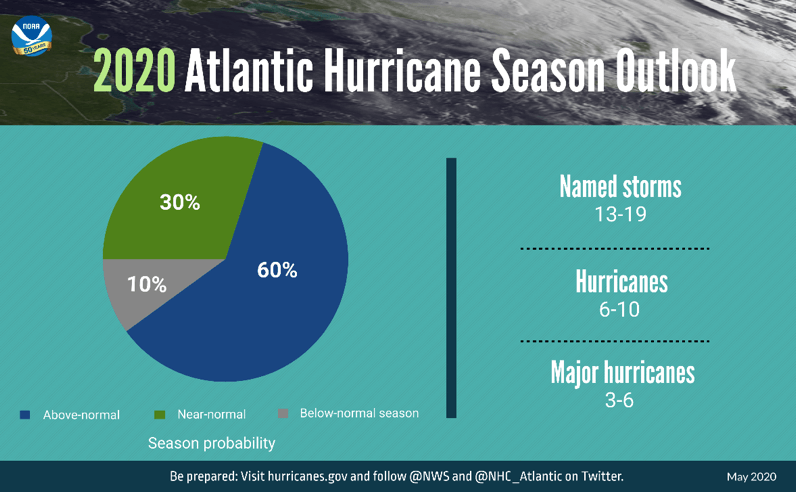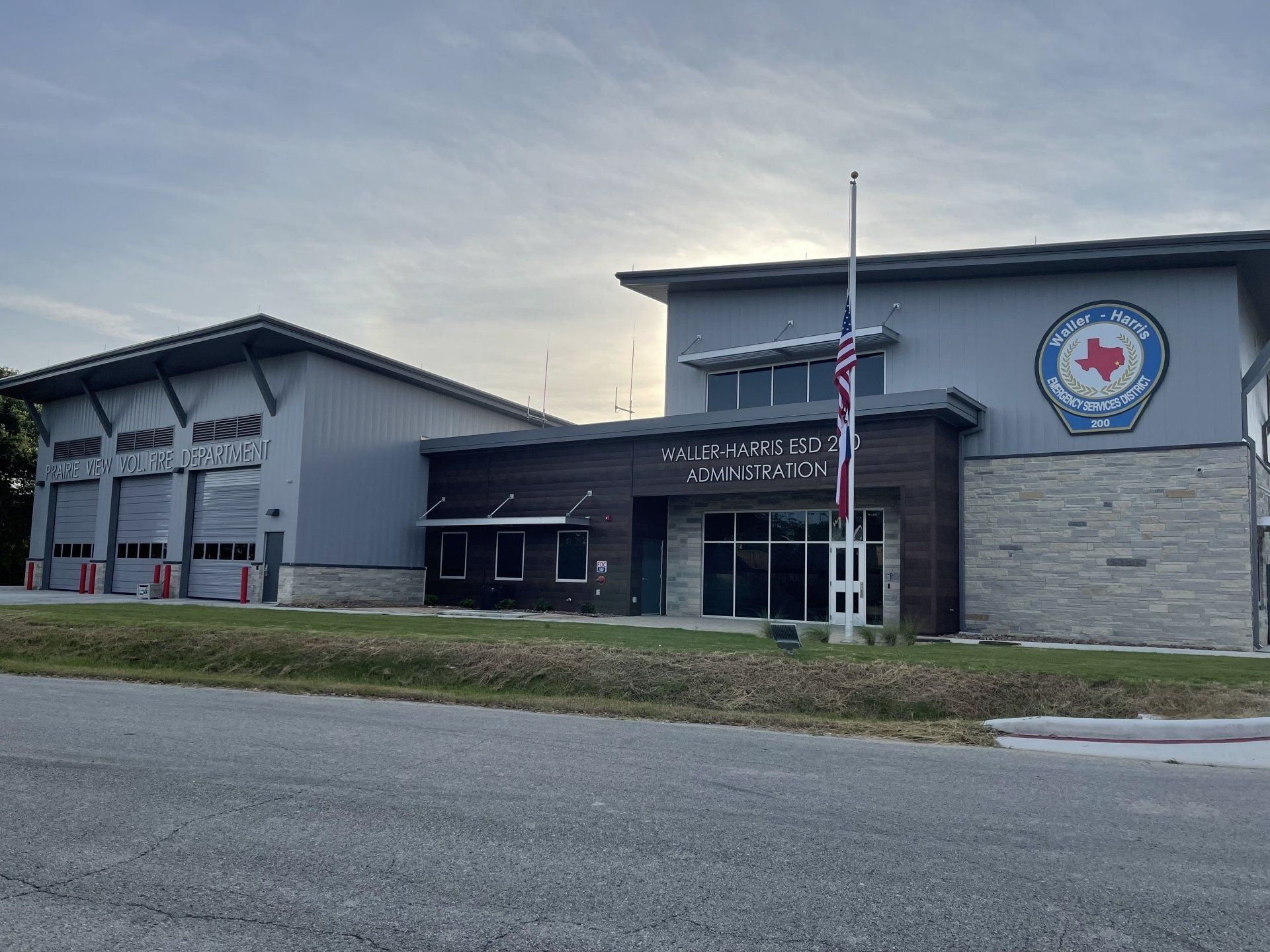2020 Atlantic Hurricane Season Has Begun
June 8, 2020
Share

Monday, June 1st, 2020 marked the first day of the Atlantic hurricane season, with another named storm brewing in the Gulf of Mexico.
Two tropical storms, Arthur and Bertha, formed in May ahead of the official start of the season: Arthur formed about 190 miles east-northeast of Cape Canaveral, FL, while Bertha formed near the coast of South Carolina and then made landfall approximately 20 miles east of Charleston.
The next named storm developing this season has been named Cristobal (as of Tuesday morning, June 2, 2020). The National Hurricane Center is monitoring a large area of disturbed weather over southern Mexico and has given the area an 80% chance of development over the Bay of Campeche in the next 48 hours.
This large disturbance was originally Pacific Tropical Storm Amanda, which formed quickly across the eastern Pacific over the weekend but has since dissipated as it made landfall in Central America and southern Mexico.
Season Forecasting
Nearly all weather entities -- government agencies, institutions, and private companies -- are forecasting for an above-average hurricane season for 2020. An above-normal 2020 Atlantic hurricane season is expected, according to forecasters with NOAA’s Climate Prediction Center, a division of the National Weather Service. The outlook predicts a 60% chance of an above-normal season, a 30% chance of a near-normal season and only a 10% chance of a below-normal season.
NOAA’s Climate Prediction Center is forecasting a likely range of 13 to 19 named storms (winds of 39 mph or higher), of which 6 to 10 could become hurricanes (winds of 74 mph or higher), including 3 to 6 major hurricanes (category 3, 4 or 5; with winds of 111 mph or higher). NOAA provides these ranges with a 70% confidence. An average hurricane season produces 12 named storms, of which 6 become hurricanes, including 3 major hurricanes.

A summary infographic showing hurricane season probability and numbers of named storms predicted from NOAA's 2020 Atlantic Hurricane Season Outlook
Hurricane Facts
- The 2020 Atlantic hurricane season runs from June 1 to November 30. The areas covered include the Atlantic Ocean, Gulf of Mexico and the Caribbean Sea.
- The National Weather Service defines a hurricane as a "tropical cyclone with maximum sustained winds of 74 mph (64 knots) or higher."
- Hurricanes are rated according to intensity of sustained winds on the Saffir-Simpson Hurricane Wind Scale. The 1-5 scale estimates potential property damage.
- A Category 3 or higher is considered a major hurricane.
- The National Hurricane Center advises preparedness:
- A hurricane watch indicates the possibility that a region could experience hurricane conditions within 48 hours.
- A hurricane warning indicates that sustained winds of at least 74 mph are expected within 36 hours.
2020 Atlantic hurricane season names
These are the names of tropical storms or hurricanes that may form in the Atlantic Ocean in 2020. Names are alphabetical, and alternate between male and female. Needing the entire list in a season is rare.
RECENT NEWS

In June of 2022, Waller Harris Counties Emergency Services District No. 200 (WHESD 200) received information indicating a number of district credit card statements had been altered before being submitted for review, and District financial reports were fraudulent and did not correctly reflect the fiscal status of the District. This meant the Board of Commissioners and District command staff were receiving falsified financial statements for review at regular WHESD 200 public meetings. Upon confronting a suspected employee with the initial evidence, the employee was immediately unwilling to assist the District in a full review of the District’s files, devices, and all accounts with online access. Over the course of a weekend, while the District’s IT department continued to retrieve financial data from the District’s online accounting software and purchasing accounts, the employee in question tendered their resignation. At the conclusion of the District’s internal investigation, the Board and command staff determined there was enough documented evidence of financial malfeasance to justify retaining an outside forensic auditing team to evaluate how much money was diverted from the District’s accounts. The District’s legal counsel, Coveler & Peeler, P.C., engaged a highly-respected independent forensic auditing firm to perform a deeper investigation of the District finances, reviewing transactions starting in the fall of 2020 through the summer of 2022. Ultimately the firm engaged to perform the forensic audit and fiscal investigation, BDO, provided its opinion: there were at least $30,000 of goods and services misappropriated utilizing the District’s accounts over the two-year period reviewed. The results of this investigation have been provided to Waller County Sheriff's Office (WCSO) for criminal examination. Waller-Harris Counties Emergency Services District No. 200 will cooperate with WCSO throughout the course of the investigation and support whatever conclusion they come to in regards to possible criminal charges.



